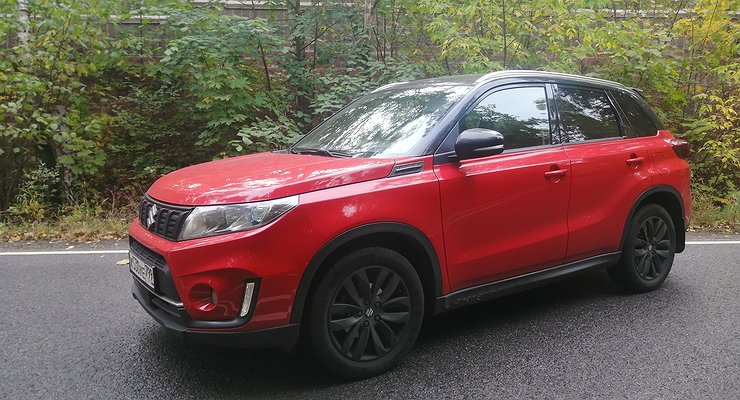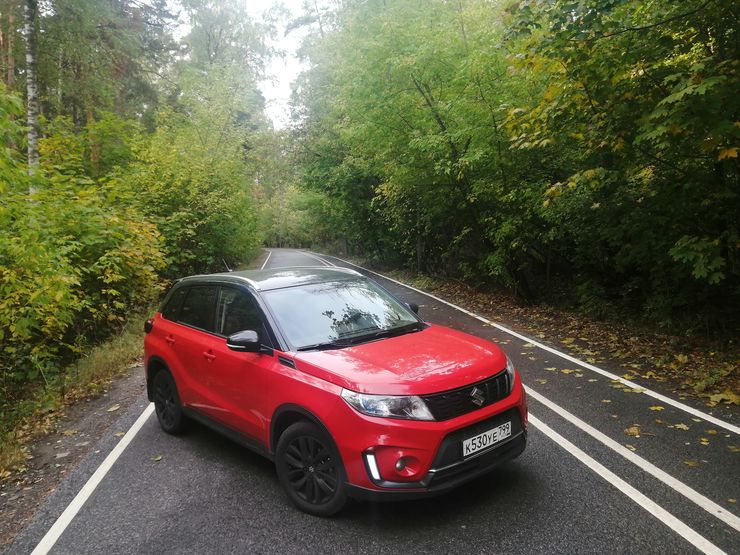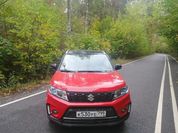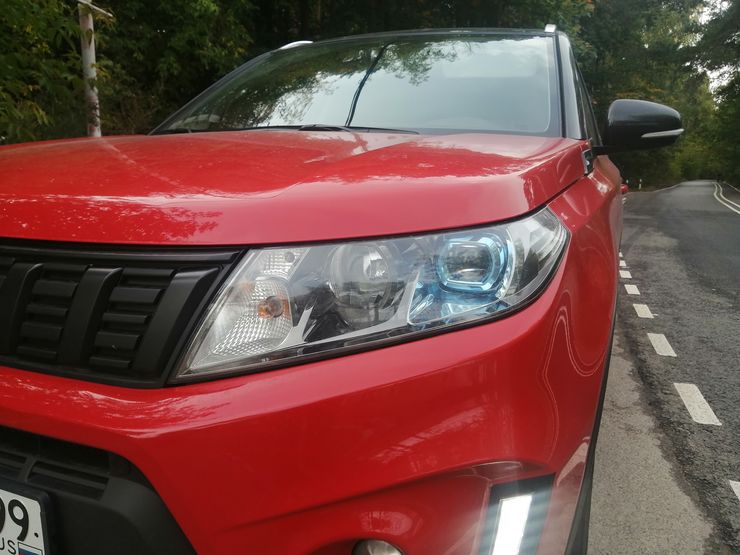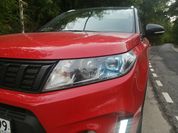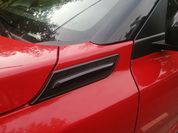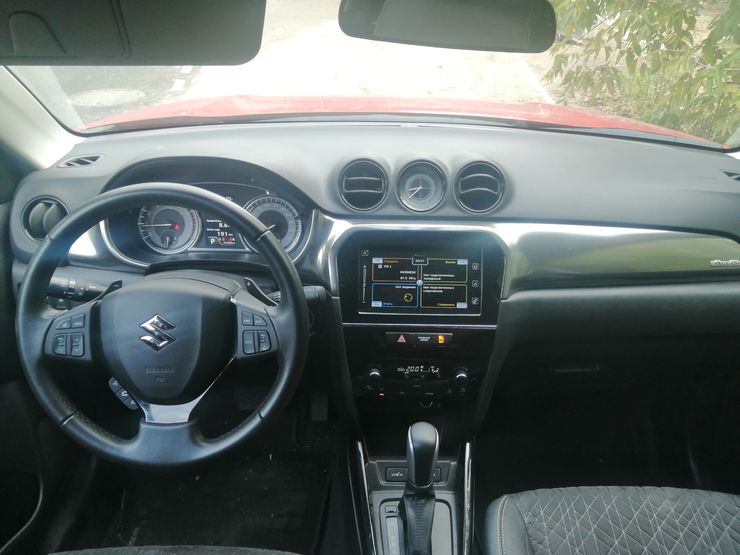Apparently, in the near future, Russian motorists will gradually switch to domestic cars. Foreign cars, with the exception of made in China, are gradually going to the scrap dumps. The AvtoVzglyad portal found a model of an imported vehicle, which, according to its characteristics, could well claim to be a model for the development of the future “Russian folk car”. Don’t be surprised, but this is a Suzuki Vitara.
Relatively affordable cars will most likely be produced exclusively by AVTOVAZ. The Chinese probably won’t help us with this, because with minimal supplies, they will only increase prices. Togliatti, it seems, promises to imagine something in the distant future based on the Renault Logan platform (he will always remember it), and build a crossover from LADA Vesta.
But how all these projects will end – only God knows. Especially given the current turbulence. But it is the Suzuki Vitara type, embodied in the same hypothetical Vesta SUV, which could become a bestseller in the coming years. Well, we can not ride the descendants of the old VAZ-2121 for another 50 years …
Understandably, these are difficult times these days. But since everyone loves four-wheel drive, let’s move away from the “our grandfathers went and it will do for us” principle. So: why should the future all-wheel drive Vesta be comparable to the Vitara in terms of performance characteristics? First of all, because the “Japanese” is small in size. City car. Parking near the house, especially in view of the upcoming rampant renovation, will become a serious problem. And a car like Vitara is the solution.
In terms of overall dimensions and associated cabin layout, there is one major complaint against the Vitara: relatively little legroom for the rear passengers. You can live, but on a long journey your knees have a hard time. Vest has no such problems, so you have to use this and “screw” 4X4 into its platform. But let’s move on.
With such a crossover feature as four-wheel drive, Vitara doesn’t look in the vein of, “I really want to be a big SUV.” Unlike all competitors. It is enough that it has noticeably more ground clearance than station wagon sedans – 185 mm. And this is enough for an ordinary person who is not engaged in the daily conquest of logging primers. For such purposes, they take UAZ.
So the Vesta platform can be raised slightly above the asphalt, slide an additional “razdatka” there, a rear-axle drive and forward: through winter city snowbanks or along summer country-dirty country roads. In Vitara, by the way, the transmission can work in several modes: “normal”, “snow” and “sport”. Yes, we admit that: in the latter case, the 140 hp 1.4-liter turbo engine sometimes allows you to “soften” like an adult in a dense city stream. But the “workers and collective peasants” of our vast country can do very well without these excesses. But without the “automatic” in the transmission and the engine under 140-150 forces – perhaps there is no more.
It is clear that AVTOVAZ now does not have its own “machine”. And engines – usually “near-strong” – 1.6 liters “aspirated”. But what’s stopping the auto giant from developing a turbine and “attaching” it to its good old engine? This is far from space technology. Although of course they require special competences in production. The inhabitants of Togliatti do not hesitate to announce plans to produce 800,000 cars annually. With such an “introduction”, the development and implementation of domestic turbochargers is a fully paid-off project. Like an automatic gearbox. We don’t want to be dependent on the goodwill of foreign suppliers, do we?
Plus, a 7-speed “passenger” automatic transmission is already stacked up at KATE LLC. Admittedly, the price tag is like that of an airplane wing. But mass production for the sake of the same AVTOVAZ will certainly significantly reduce the cost of these products. Yes, and the manufacturer’s money “Wishlist” can be reduced because of hard times … In general, from the hardware point of view, it is quite possible to make a Russian incarnation of the Suzuki Vitara. And it is necessary.
Note: I’m not saying anything about the “Japanese” comfortable options, although he has a lot of them! But the full set available to the owner can be reproduced on any future car model. These climate controls, multimedia with touchscreens and car plays, rear view cameras, keyless entry and engine start are now easy to implement on virtually any car. Most importantly, component delivery is smooth…
Meanwhile, there are not even crossovers based on Vesta on the horizon, you have to operate the Vitara unpatriotic, but with pleasure. The car confirms our ideas about the optimal (exactly “optimum”, not “ideal”) city SUV. It pleases with quite decent handling and, as mentioned before, good dynamics. Yes, the steering wheel is, like many Japanese cars, “empty”. But you get used to it quickly and ‘tumble’ brutally in corners. In addition, you quickly understand: the suspension keeps the trajectory surprisingly reliably in all imaginable modes of urban traffic in the style of a “neighborhood raider”. And that’s all you need for such a machine.
As usual, fuel consumption is highly dependent on driving style. On the highway, it is quite possible to get an indicator of 7 liters of gasoline per 100 km. Approximately 8.5 l/100 km is required for largely car-free driving in the city. Well, when driving through severe traffic jams or with active “pedaling”, the flow rate easily approaches 11 liters. In general: the right car “for the village and the city”, as journalists of the late USSR said. You and I, it seems, will also have to return “to the origin” in this sentence, but in a new historical turn…
Relatively affordable cars will most likely be produced exclusively by AVTOVAZ. The Chinese probably won’t help us with this, because with minimal supplies, they will only increase prices. Togliatti, it seems, promises to imagine something in the distant future based on the Renault Logan platform (he will always remember it), and build a crossover from LADA Vesta.
But how all these projects will end – only God knows. Especially given the current turbulence. But it is the Suzuki Vitara type, embodied in the same hypothetical Vesta SUV, which could become a bestseller in the coming years. Well, we can not ride the descendants of the old VAZ-2121 for another 50 years …
Understandably, these are difficult times these days. But since everyone loves four-wheel drive, let’s move away from the “our grandfathers went and it will do for us” principle. So: why should the future all-wheel drive Vesta be comparable to the Vitara in terms of performance characteristics? First of all, because the “Japanese” is small in size. City car. Parking near the house, especially in view of the upcoming rampant renovation, will become a serious problem. And a car like Vitara is the solution.
In terms of overall dimensions and associated cabin layout, there is one major complaint against the Vitara: relatively little legroom for the rear passengers. You can live, but on a long journey your knees have a hard time. Vest has no such problems, so you have to use this and “screw” 4X4 into its platform. But let’s move on.
With such a crossover feature as four-wheel drive, Vitara doesn’t look in the vein of, “I really want to be a big SUV.” Unlike all competitors. It is enough that it has noticeably more ground clearance than station wagon sedans – 185 mm. And this is enough for an ordinary person who is not engaged in the daily conquest of logging primers. For such purposes, they take UAZ.
So the Vesta platform can be raised slightly above the asphalt, slide an additional “razdatka” there, a rear-axle drive and forward: through winter city snowbanks or along summer country-dirty country roads. In Vitara, by the way, the transmission can work in several modes: “normal”, “snow” and “sport”. Yes, we admit that: in the latter case, the 140 hp 1.4-liter turbo engine sometimes allows you to “soften” like an adult in a dense city stream. But the “workers and collective peasants” of our vast country can do very well without these excesses. But without the “automatic” in the transmission and the engine under 140-150 forces – perhaps there is no more.
It is clear that AVTOVAZ now does not have its own “machine”. And engines – usually “near-strong” – 1.6 liters “aspirated”. But what’s stopping the auto giant from developing a turbine and “attaching” it to its good old engine? This is far from space technology. Although of course they require special competences in production. The inhabitants of Togliatti do not hesitate to announce plans to produce 800,000 cars annually. With such an “introduction”, the development and implementation of domestic turbochargers is a fully paid-off project. Like an automatic gearbox. We don’t want to be dependent on the goodwill of foreign suppliers, do we?
Plus, a 7-speed “passenger” automatic transmission is already stacked up at KATE LLC. Admittedly, the price tag is like that of an airplane wing. But mass production for the sake of the same AVTOVAZ will certainly significantly reduce the cost of these products. Yes, and the manufacturer’s money “Wishlist” can be reduced because of hard times … In general, from the hardware point of view, it is quite possible to make a Russian incarnation of the Suzuki Vitara. And it is necessary.
Note: I’m not saying anything about the “Japanese” comfortable options, although he has a lot of them! But the full set available to the owner can be reproduced on any future car model. These climate controls, multimedia with touchscreens and car plays, rear view cameras, keyless entry and engine start are now easy to implement on virtually any car. Most importantly, component delivery is smooth…
Meanwhile, there are not even crossovers based on Vesta on the horizon, you have to operate the Vitara unpatriotic, but with pleasure. The car confirms our ideas about the optimal (exactly “optimum”, not “ideal”) city SUV. It pleases with quite decent handling and, as mentioned before, good dynamics. Yes, the steering wheel is, like many Japanese cars, “empty”. But you get used to it quickly and ‘tumble’ brutally in corners. In addition, you quickly understand: the suspension keeps the trajectory surprisingly reliably in all imaginable modes of urban traffic in the style of a “neighborhood raider”. And that’s all you need for such a machine.
As usual, fuel consumption is highly dependent on driving style. On the highway, it is quite possible to get an indicator of 7 liters of gasoline per 100 km. Approximately 8.5 l/100 km is required for largely car-free driving in the city. Well, when driving through severe traffic jams or with active “pedaling”, the flow rate easily approaches 11 liters. In general: the right car “for the village and the city”, as journalists of the late USSR said. You and I, it seems, will also have to return “to the origin” in this sentence, but with a new historical twist…
Source: Avto Vzglyad
I’m Sandra Torres, a passionate journalist and content creator. My specialty lies in covering the latest gadgets, trends and tech news for Div Bracket. With over 5 years of experience as a professional writer, I have built up an impressive portfolio of published works that showcase my expertise in this field.







